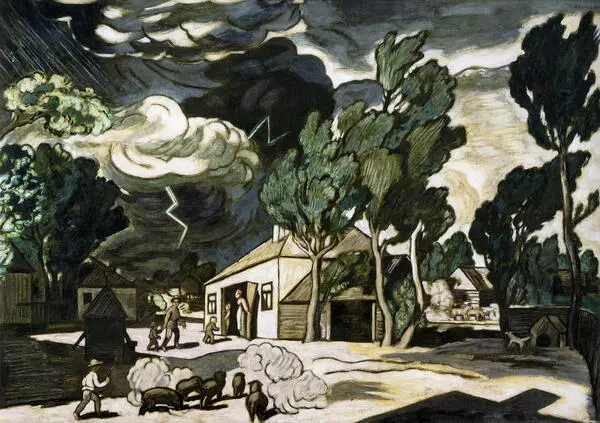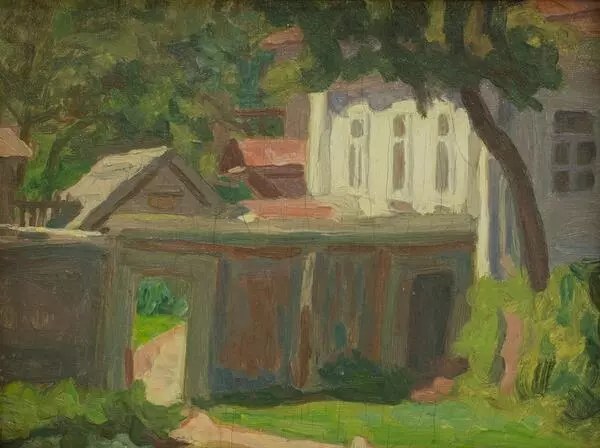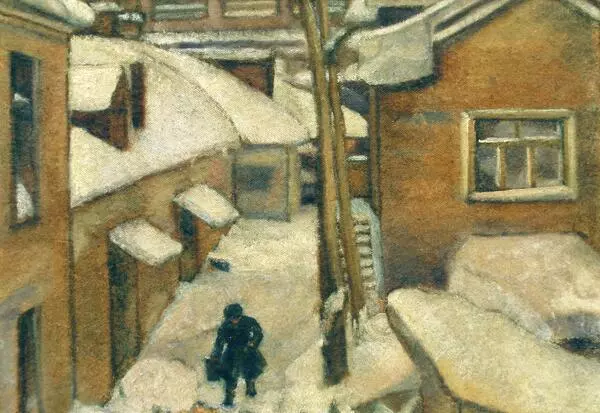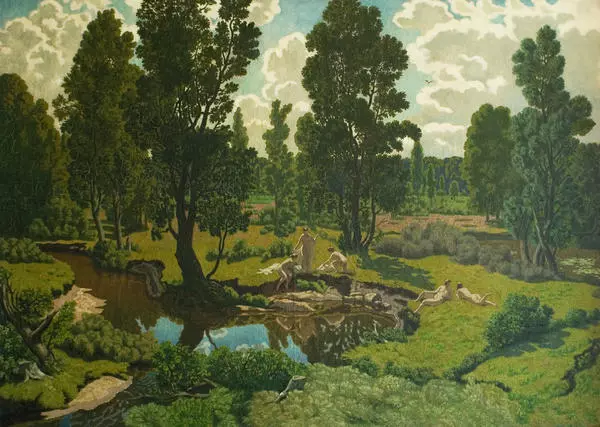Nikolai Petrovich Krymov, a graduate of the Moscow School of Painting, Sculpture and Architecture, was constantly experimenting in search of the most accurate expression of his creative ideas. He was looking for his own painting style. The decorative and “tapestry-like” nature of his paintings — with a sophisticated color palette and picturesque manner — made his early works resemble those of the artists of the “Blue Rose” creative association, close to the poetics of symbolism. Later, observation of nature and work on the landscape series “Roofs” would bring Nikolai Krymov closer to the artists of another association — the Union of Russian Artists.
Between 1908 and 1910, Nikolai Krymov began incorporating genre motifs into his paintings, while the plots remained minimalistic. The artist focused on depicting real-life motifs but approached them in the style of traditional lubok prints. At that time, interest in primitive art was a common trend in Russian artistic circles. The famous art critic Pavel Muratov praised Krymov’s landscapes for their “thick and powerful painting, nuanced colors, and simple, angular forms.” All of this can be demonstrated in the painting from the museum collection.
The composition of the painting “Winter” was completely made up by the artist. The landscape is generalized. From old, familiar motifs, the artist constructed his own world. It is a little naive and partly toy-like but very similar to reality. The artist turned not so much to the technical aspects as to the spirit of lubok prints. The pure feelings and absence of details helped to focus on the life of nature itself, while the deliberate simplification of forms, exaggerated drawing, and generalized color spots freed the art from outdated traditions and allowed the artist to express his thoughts on timeless and eternal themes.
Before the Russian Revolution of 1917, this work was exhibited by the Union of Russian Artists. In 1925, it was displayed at the exhibition “The Peasant in Russian Painting” in the State Tretyakov Gallery. In 1984, it was shown at the Central House of Artists in Moscow, at a personal exhibition of Nikolai Krymov dedicated to the artist’s 100th birthday.







